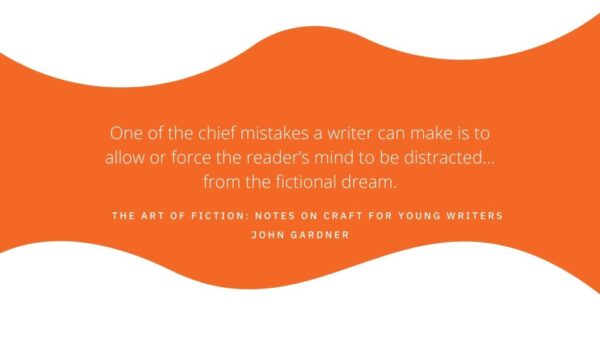How to Create a Fictional Dream: Part 1
“Fiction does its work by creating a dream in the reader’s mind” – John Gardner
If Gardner is correct, then writers must figure out how to create a fictional dream for the reader. Let’s explore Gardner’s idea. To provide the most comprehensive overview, this discussion has three parts.
In this post, I’m going to discuss how to set the stage for the fictional dream. In the next post, Part 2, we’ll look at keeping the reader in the dream. Part 3 is about how to make the dream vivid and continuous.
How to Create a Fictional Dream: Set the Stage
Think back to your favorite books. Did the story keep you spellbound? It had to. Regardless of the quality of writing, our favorite books have great stories in them. We remember those books. Whether they are fiction or non-fiction, the best books can have a magical quality that ensnares us.
What is the Fictional Dream?
Webster defines dream as “a state of mind marked by abstraction or release from reality.” That’s the writer’s job, to create a release from reality. Reading is a way to escape our own lives, to imagine ourselves as someone else, to see, hear, feel and touch with someone else. Every writer strives to create such an experience.
How does a writer succeed? A writer creates a dream if they capture a world in words. Every detail must stay true to the story and keep the reader turning the pages. We can use some of the best stories for examples of a fictional dream.
You may have a list, but I offer a few of mine:
- Romeo and Juliet by Willian Shakespeare
- The Adventures of Huckleberry Finn by Mark Twain
- Ender’s Game by Orson Scott Card
- To Kill a Mockingbird by Harper Lee
- Lord of the Rings by J. R. R. Tolkien
Who’s in the Dream?
Who is in your dreams? Are you standing alone doing nothing? I doubt it. Our dreams are full of action with people doing things. We see and interact with them. And sometimes, when we wake, the dream lingers. This is what a good book must do.
Your characters, no matter the genre, must resonate with the reader. That means, if your book is non-fiction the prose must make us feel close to the narrator or give the sense that we are experiencing or discovering the things the author discusses in the book.
Write true to life characters. Great characters will jump right out of your book and into the reader’s mind. The reader will see them and feel with them as they work through the conflicts you put in front of them.
What’s Happening in the Dream?
Can you have a dream where nothing happens? Probably not? Readers like to get tangled up. Make sure things are happening to your characters. Yes, we need to know what the characters are doing but also why they do it.
Tell us why that character walks down that fictional road. Maybe your characters are lost in a desert. Will they survive? Blanket the reader with the details. If you can make it so we cannot take our eyes off of them, you’ve done your job. However you do it, get the reader tangled in the action. Let the reader get sad with them, angry with them and more than anything emotionally tied to the decisions your characters make.
How will things work out? Only the writer knows. Whatever you do, be sure to take the reader on a journey. Slowly stir up and then unwind your story. Slide your reader down into the depths of your world. Stay there until the last page. That’s what makes a great story.

Where is the Dream Happening?
Both time and place contribute to the authenticity of a story. Take Lord of the Rings for example, the story takes place at an unknown time in unknown lands. But the setting seemed real and possible. Anyone who read and enjoyed the book, took up residence in the Shire with Frodo Baggins in his smial. Later, the reader would have trekked through Middle Earth, finding themselves on a great adventure. For me, it was a wonderous dream.
After I finished The Fellowship of the Ring, I started book two, minutes later. I couldn’t wait. During those teen days, mostly reading in my bed, I did very little sleeping because I had to finish the whole series. Tolkien knew how to design a dream.
Whether your story takes place in current day, right here on earth, or in the future on another planet, build a world for the reader to live in with your characters.




